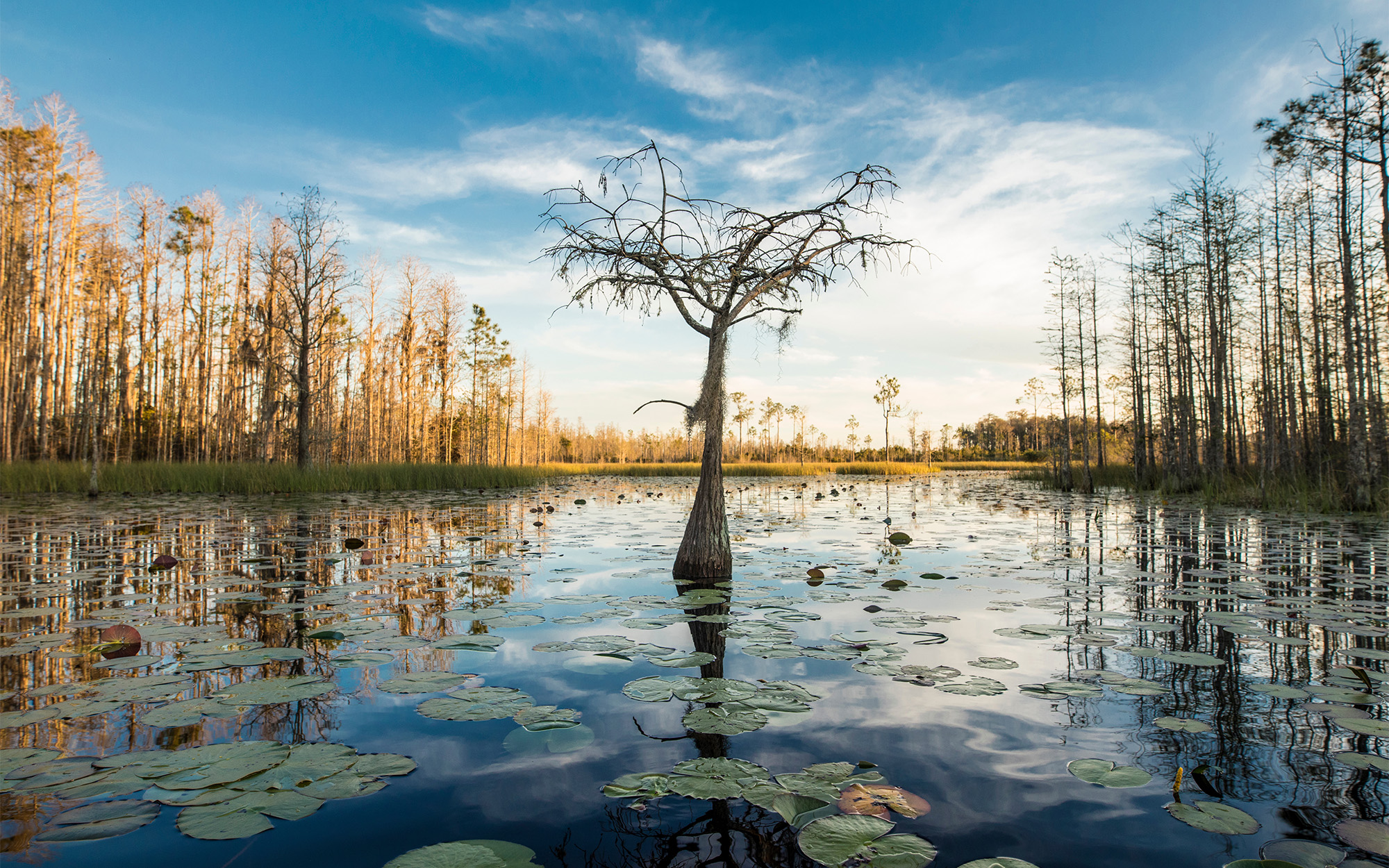Conservationists in the South who are working to protect America’s largest remaining blackwater swamp from a proposed mining project just got some encouraging news from the U.S. Fish and Wildlife Service. On Friday, the USFWS announced its final decision to expand the Okefenokee National Wildlife Refuge by approximately 22,000 acres, potentially opening the door to a buyout of the proposed mine.
That’s because the feds’ planned boundary expansion would include lands held by a number of private owners, including Twin Pines Minerals LLC. The Alabama-based mining company has been trying to build a heavy-metals mine along the eastern boundary of the refuge since 2017, but the project has been stuck in the permitting phase and is currently awaiting final approval from state regulators. The Georgia Environmental Protection Division drafted conditional permits for the project in February 2023, but the division has not indicated when it will issue its final decision, according to The Center Square.
Before the refuge expansion can happen, however, the private landowners involved would have to agree to sell their acreage or establish conservation easements, which is far from a sure thing. Twin Pines told reporters Tuesday that it is still pursuing the project, and that the USFWS’ recent announcement will not affect the company’s plans to build a mine in the area.
Read Next: A Mining Proposal in the Okefenokee Threatens America’s Largest Remaining Blackwater Swamp
It’s also possible that the planned refuge expansion will be rolled back by an incoming Trump Administration. The same can be said of the other executive actions taken by the current administration in its final days as Biden attempts to cement a conservation legacy.
Public Support for the Refuge Expansion Goes Beyond the U.S.
Friday’s announcement from the USFWS comes after a 55-day public scoping period, during which time the agency received approximately 30,000 comments from individuals in all 50 states and 36 countries. Those comments were generally supportive of the refuge expansion.
“The response received during the public comment period is a testament to just how special the Okefenokee is, not just to our local community, but to people all over the nation and around the world,” Okefenokee refuge manager Michal Lusk said in a press release. “We appreciate the commitment to conserving this landscape.”
The planned expansion could potentially create more opportunities for hunting, fishing, and outdoor recreation in the Okefenokee, which is already the largest National Wildlife Refuge east of the Mississippi. Situated near the Florida-Georgia line, the refuge provides is home to a variety of sportfish, along with waterfowl, deer, black bears, and an abundance of alligators and other amphibians.
The Okefenokee is also a critically important hydrological area, as it forms the headwaters of two major rivers: the Suwanee, which flows into the Gulf of Mexico, and the St. Marys, which feeds the Atlantic Ocean. The refuge’s interconnected network of swamps, streams, and shallow lakes are a paradise for anglers, and a 120-mile-long wilderness canoe trail through the heart of the blackwater swamp provides one of the best remaining wilderness experiences for paddlers in the southeastern U.S. (The vast majority of the 407,00-acre refuge is already designated as a national wilderness area.)
Twin Pines has repeatedly stated that its project would not affect the ecology of the swamp or the recreational opportunities there. However, independent scientific studies have shown that the proposed mine could significantly damage the ecology of the Okefenokee by drawing down water levels and impairing water quality. An open letter penned by a group of 87 researchers, academics, and scientists from across the South in February 2023 speaks to the “high likelihood” that the project would cause permanent ecological damage to the area.
“Go ahead and put Georgia’s Okefenokee Swamp on the same shortlist with Alaska’s Bristol Bay, Minnesota’s Boundary Waters, and Nevada’s Ruby Mountains,” reads an explainer piece by the Theodore Roosevelt Conservation Partnership. “[These are] areas that provide unmatched fish and wildlife habitat and recreation opportunities that spur the local economy but have been at risk from development interests.”
Read Next: Feds Say Mining Company Can’t Divert 1.4 Million Gallons Water per Day from Georgia Wildlife Refuge
A proclamation by the U.S. Department of the Interior made just two weeks before the USFWS’ Jan. 3 announcement only bolsters the Okefenokee’s image as a globally significant area that deserves added protections. On Dec. 20, the Department nominated the NWR to join the UNESCO World Heritage List. This list includes more than 1,000 other important cultural sites and bastions of conservation, such as Arizona’s Grand Canyon and Ecuador’s Galápagos Islands.
DOI Secretary Deb Haaland said in December that the UNESCO nomination “serves as a recognition of the refuge’s unparalleled natural and cultural significance.”
Read the full article here
